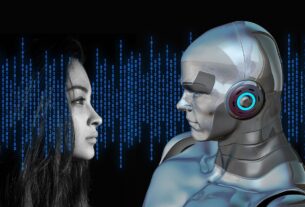Artificial Intelligence (AI) is changing the way one does software testing. AI makes the method of testing more autonomous than automated. Particularly, AI in software testing is highly useful for organizations nowadays. With AI, organizations get to test faster, more efficiently, and also reliably, leading to better quality software in less time to market.
Introduction to AI In Software Testing
Traditionally, software testing has been manual and labor-intensive. But now, the greater the complexity of software systems, the more pressing the need for efficient testing methods. Automation tools were a step up from doing mundane tasks.
AI takes it to a new level by incorporating Machine Learning (ML) and more sophisticated algorithms. Not only is AI automating tasks but learning from these tasks to make the testing smarter, adaptive, and on the edge.
Many trends are emerging that will shape the future of software testing. These trends can be defined as AI-driven testing continues to grow, integration into cloud platforms, and how it enhances the User Experience with smart automation.
Evolution of Software Testing
The following section elaborates on how software testing evolved from manual testing practices to automated methods and eventually to incorporating AI into the testing processes.
From Manual to Automated Testing
Testing in the early days of software development relied much on manual efforts. Testers would execute test cases and carefully check for defects. However, as applications grew complex, organizations began adopting automated testing tools. These tools significantly improved speed and accuracy by automating repetitive tasks.
It is one of the greatest leaps in software development from manual to automated testing. This means that with automation, tests can be run much more frequently and consistently, discovering defects quicker and delivering better overall quality products. Traditional automation still relies on much human intervention in the form of script creation and maintenance.
The Rise of AI in Testing
AI has transformed automated testing through intelligent automation. It has made testing with tools not require predefined scripts in comparison to previous methods, whereas the tools take huge test data, provide optimized test cases, and then look for patterns of possible defects. This is pretty helpful in an agile environment that undergoes rapid iteration.
AI is further added to exploratory testing by simply mimicking a user’s activity and identifying other cases that are undetected when using test scripts. This has ensured that organizations today can identify such hidden defects, which may sometimes influence the final experience of users.
Key Capabilities of AI in Software Testing
AI has brought transformation capabilities to software testing by significantly improving the efficiency, accuracy, and effectiveness of testing processes. The next four sections describe the key capabilities of AI in software testing. Each of the capabilities has critical importance in closing the gap between user requirements, technical execution, and streamlining the workflow toward quality software delivery.
Natural Language Processing (NLP)
By NLP technology AI reads human language and translates the needs of users into test cases or automation scripts. This capability makes it possible for teams to build tests based on actual user needs instead of assumptions. NLP closes the gap between technical specifications and organizational requirements since the software fulfills the expectations of the users.
ML
ML equips AI to learn from past occurrences without explicit programming. Trained with AI during testing, it can identify trends and continue to make better recommendations over time to ensure enhanced efficiency of testing work. For example, ML algorithms can analyze customer history around defect data to suggest where the application is possibly going to fail based on previous trends.
Self-Healing Tests
Perhaps one of the most striking characteristics of the rise of AI is self-healing. The moment the tests fail because of the shifting application or environment, AI auto-updates tests to continue giving reliable results without the need for manual intervention. Such a feature would cut overhead and let the teams be steered toward other activities of value.
Generative AI
Generative AI plays a highly crucial role in software testing by automating the process of test case generation and its maintenance. This kind of technique is useful to produce new data or code based on patterns already seen. So, it minimizes a lot of effort but maximizes the coverage and quality. It assures comprehensive validation under diverse conditions since generative AI creates different test scenarios automatically.
Challenges in Implementing AI in Testing
The advantages are obvious, but organizations face challenges when introducing AI into testing processes:
- Data Quality
The success of AI is highly dependent on the quality of data used for training; poor data can lead to inaccurate predictions.
- Resistance to Change
Teams that had been previously accustomed to traditional methods began to resist developing new technologies, which acted as barriers in the implementation phases.
- Skill Gaps
AI requires specific skills different from traditional team skills; training programs become an imperative part of investment in such teams.
- Complexity of Integration
The integration process would prove to be complex due to AI-enabled tools being integrated into the work routine and requiring a very large-scale revision of departments.
Role of Cloud Testing for AI in Software Testing
The interest of organizations in better Quality Assurance (QA) of software is continuously growing. That is why it has become the most crucial thing for the advancement of testing through AI for the cloud testing role.
One of the most promising advantages of cloud testing is that organizations can easily scale their testing efforts in response to project requirements without investing in any physical equipment.
Additionally, cloud platforms usually follow a pay-per-go type arrangement, which reduces upfront costs associated with dedicated testing environments. Accessibility is another benefit through which teams can access the cloud-based testing environments while working remotely from any place and collaborate across disparate teams.
Furthermore, the cloud platforms also allow access to a large number of Operating Systems, browsers, and devices to ensure wide compatibility testing.
LambdaTest happens to be one of the leading cloud-based testing platforms that offer an environment to do in-depth compatibility testing on 3000+ desktop and mobile browsers. Recently, they have launched KaneAI-a native AI QA agent that does end-to-end testing with the power of AI. KaneAI is the world-first end-to-end testing agent built on advanced large-language models (LLMs). Enabling faster QA & Developer workflows leveraging NLP. Now, you know, with LambdaTest, organizations can unify the release cycles and deliver quality software.
It includes cross-browser testing with automated Selenium tests, real device testing on cloud-hosted devices for accurate results, seamless integration with popular tools such as Jenkins and GitHub Actions, visual regression testing of detecting the difference in an application’s version, and collaboration tools that will allow real-time teamwork by integrating the feature of bug reporting.
Cloud testing integrated with AI for software testing means that organizations can take the QA processes of their software significantly to a higher level. With the help of the scalability, cost-effectiveness, and accessibility of cloud platforms like LambdaTest, teams could make testing much more efficient and get applications ready with the best quality in record time.
Benefits of AI-Driven Testing
Massive benefits are added to the testing process with AI integration in software testing. Some of the benefits of AI-driven testing are outlined in this section, including faster release cycles, improved test coverage, better defect prediction, and increased efficiency through low-code platforms. Optimized workflows and empowered teams deliver high-quality software solutions more quickly and effectively.
- Faster Release Cycles
AI-related tools automate manual testing. This aids in saving time in releasing the best quality software earlier by organizations. There is scope for minimal time on the testing part of the project so these can instead be maximized on critical projects.
- Improved Test Coverage
With the capability to review large data sets, teams can get improved test coverage by analysis of historical data and usage patterns. This helps in ascertaining that the important functionalities are checked before the release of a product.
- Enhanced Defect Prediction
AI algorithms, based on past projects, can predict which areas could have potential defects by identifying patterns that signal weak spots in a codebase. This way, teams can address problems even before development reaches later stages or post-launch.
- Increased Efficiency with Low-Code Platforms
Efficiency is observed to grow in demand due to the rising adoption of non-technical team members in the testing process. These allow developers to work with the tester while simultaneously allowing quick designing and execution of the test.
Low-code platforms also enable analysts or product owners, who are not coding experts, to participate in direct test design and execution. Democratizing by using low-code platforms may bridge the communication gap between the technical and non-technical stakeholders.
Emerging Trends of AI in Software Testing
There are several key trends that are expected to shape the future of software testing. These trends are mentioned below:
- Continued Rise of AI-Driven Testing
AI-driven testing will continue to significantly transform software QA. Generative AI will enable teams to automate test creation and maintenance, as well as deliver intelligent insights that refine and optimize test strategies. As organizations are dealing with increasingly complex software systems, integrating AI into the development workflow is gaining pace.
- Shift-Left and Shift-Right Testing
Shift-left and shift-right testing are emerging concepts that are gaining popularity as organizations seek faster feedback loops throughout the development lifecycle. Shift-left focuses on early testing to catch defects early, while shift-right monitors post-deployment to ensure quality is sustained and delivered with actual user feedback.
This two-pronged approach creates a continuous improvement loop by tracking UX after release and catching defects early.
- Ethical AI Testing
Ethical standards will be a key aspect in the further integration of AI into the development processes of software. Organizations must emphasize issues of transparency, fairness, and accountability in AI-driven systems. This focus will help build trust with users while observing a good balance in regulatory standards.
Ethical considerations extend beyond compliance but also involve addressing biases present within the training datasets and leading to unfair outcomes in an automated decision-making process.
- Cybersecurity Testing Focus
Cybersecurity is a global priority due to increased digital attacks. To prevent threats, organizations should implement better security mechanisms in testing processes. Integrating security into every aspect of the development phase, using automated security testing tools, and continuously monitoring post-deployment can help identify potential vulnerabilities early and reduce risk exposure.
Also, continuous monitoring allows teams to quickly detect security breaches or anomalies, enabling swift response actions.
Conclusion
To conclude, as digital transformation projects continue to penetrate every field, such as finance and healthcare, testing of software by AI will gradually be the utmost important activity of the future times.
With the association of automation with smart capabilities, the nature of the processes involved would gradually make the system process autonomous while making the human tester feel much freer, and the efficiency is enhanced in all levels associated with the life cycle of the product.
LambdaTest platform provides a secure environment for parallel testing across various devices or browsers, empowering developers to deliver faster applications. The future is bright due to advancements in technologies like AI, making it crucial for organizations to embrace these trends to stay competitive.
Trends like generative AI enhancements, stronger cybersecurity measures, low-code platform ethical considerations, and shift-left/right methodologies will play significant roles in modern software testing practices across various industries. By embracing these trends, organizations can stay competitive and meet the changing demands of customers and users.




